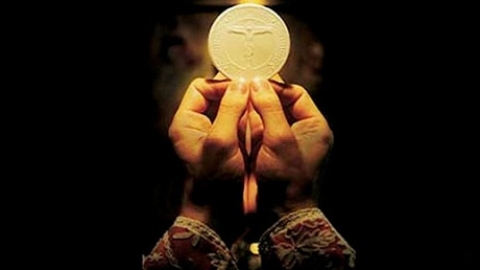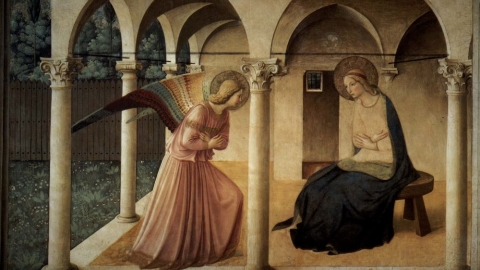St. Clement I, Pope and Martyr

Martyre de Saint Clément Ier
Pope St. Clement I was the third successor of St. Peter. He was Supreme Pontiff from 92 to 99 according to Eusebius. He is the author of an important apostolic letter to the Church in Corinth. The Roman breviary dedicates the following notice to him on his feast day, November 22.
Clement, son of Faustinianus, was born in Rome in the district of Mount Coelius and was a disciple of Blessed Peter. St. Paul makes mention of him in his Epistle to the Philippians: “And I entreat thee also, my sincere companion, help those women who have labored with me in the gospel, with Clement and the rest of my fellow laborers, whose names are in the book of life.” (Phil. 4:3).
He divided the city of Rome into seven parts, which he allocated to seven notaries, assigning each to one of these seven regions, with the charge of carefully collecting everything that was known about the sufferings and acts of the martyrs, and put all of these things in writing. He himself composed with great care several useful works, which have shed light on the Christian religion.
As he converted many people to the faith of Christ through his teachings and the holiness of his life, the Emperor Trajan sent him into exile, beyond Pont-Euxin [the Black Sea], into the deserts that stretch around the city of Cherson [now in the Crimea]; he found there two thousand Christians, condemned by this same Trajan to quarry marble.
One day when they were suffering from a lack of water, Clement, after praying, climbed a nearby hill, at the top of which he saw a lamb, touching with his right foot a source of fresh water which he made to gush; all quenched their thirst there. Many unbelievers were brought to the faith of Jesus Christ by this miracle and also began to conceive of veneration for the holiness of Clement.
Trajan, irritated by these conversions, sent out emissaries with orders to tie an anchor to Clement’s neck and throw him into the sea. The order was carried out. The Christians were praying on the shore to find the martyr’s body, at once the sea retreated three miles. They walked out and found a small, temple-shaped marble edifice. Inside was a stone arch, where the body of the Martyr was laid, and next to it, the anchor with which he had been thrown into the waves. The inhabitants of the region, struck by this wonder, embraced the faith of Jesus Christ.
Subsequently, under the pontificate of Nicholas I, the body of St. Clement was transported to Rome and buried in the church that bears his name. A church was also dedicated under his patronage on the very spot on the island where the fountain had miraculously sprung forth.
This Pontiff occupied the Holy See for nine years, six months, and six days. In the month of December he held two ordinations in which he ordained ten priests and two deacons, and consecrated fifteen bishops for various places.
Illustration : Fungai, Public domain, via Wikimedia Commons


